Is December already drawing to a close? I can scarcely believe that it is now time to start penning the end of year review, list my favourite albums of the past twelve months, and compile the traditional end of year mix cd. 2015 has genuinely disappeared in the blink of an eye. I suppose this is to be expected given all that has happened; the relocation from Bristol to Birmingham, buying and decorating a new house (phase 1 of the decoration saw 5 rooms decorated and completed, and phase 2 will be commencing in January), and becoming a father. I’d like to think that the above constitutes a reasonable level of activity.
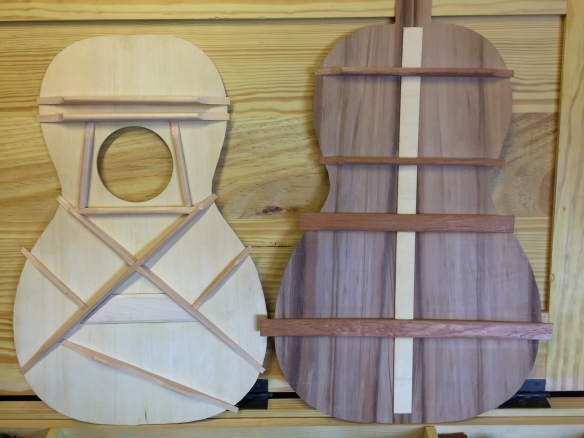
The parlour guitar build has been the main focus of 2015
Amongst all of this, I also found time to set up a new workshop, make some shavings, and keep writing. The new workshop has turned out to be ideal, and having given myself some time to settle into the new space I have made a few changes and additions since my original workshop tour, which I will write about separately. In terms of projects completed, 2015 is a little thin on the ground, although a lot of progress has been made on the parlour guitar, and I should be in a position to assemble this guitar in the next couple of months. I also managed to secure a new paying commission (the Mystery-Caster) and came close to bagging a paying commission from one of my favourite musicians (in the long term I’m hoping this one will still come to fruition).
2015 saw seven of my articles published in Furniture & Cabinetmaking, and the blog has had nearly twice as many views when compared to 2014, as well as introducing the new “Getting to Know…” feature (which I hope to continue into 2016).
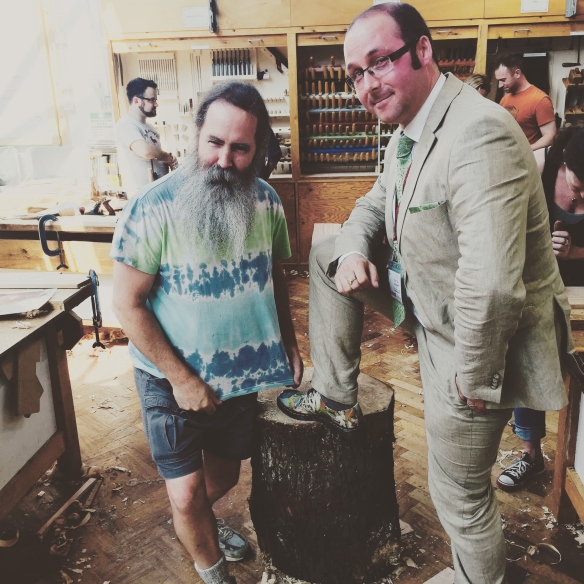
Peter Follansbee contemplates swiping my Hieronymus Bosch print Docs…
I had the pleasure of meeting both Peter Follansbee and Tom Fidgen, as well as taking Roy Underhill’s Woodworking with Thomas Jefferson class. Learning from Roy for a week was an incredible experience, and helped to develop all manner of parallel skills. Peter, Tom and Roy are not only incredibly knowledgeable, but also very generous with their knowledge, and I highly recommend taking a class (or simply just chatting with them) if ever the opportunity presents itself.
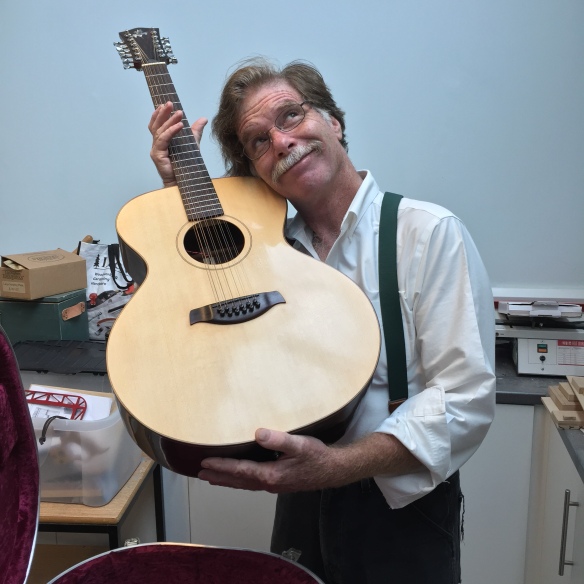
Roy and Esmerelda become acquainted.
The other highlight of the year was of course exhibiting at the European Woodworking Show in Cressing Temple, and it was wonderful to get to meet so many inspiring makers and tool manufacturers, as well as people who read the blog (or my articles), and to spend two days chatting about woodwork face to face. Thank you so much to everyone who came and said hello during the two days.
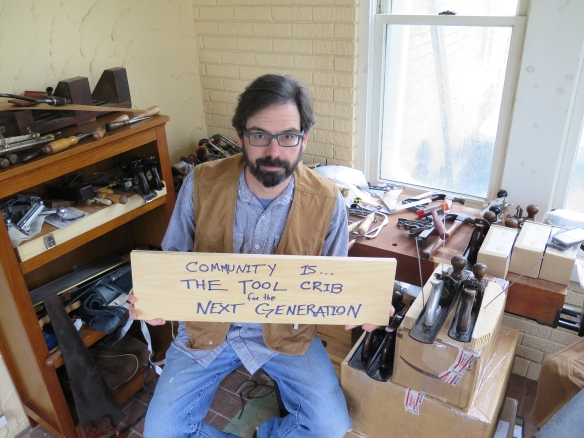
The “Community Is…” project in many ways defined 2015 for me. Thanks to all the contributors (including Chris Schwarz – pictured here)
And this very neatly brings me to the real highlight of 2015. Which is not projects built or achievements unlocked, but rather the sense of community in the woodcrafts. Lutherie always used to be a very solitary activity for me, but particularly over the past 12 months the online community through Instagram and the blogosphere, then reinforced through events such as EWS, has meant that I find myself within a wider community of craftspeople. And this has had the effect of enriching my time in the workshop, situating my work within broader practices and traditions, and providing new opportunities to learn and question. The community is made up of so many wonderful craftspeople that mentioning individuals seems like a foolhardy endeavour. However special mention must go to James McConnell whose Daily Skep blog debued this year, and is rapidly becoming one of my favourite woodwork blogs(seriously, I read James’ blog and wonder if there’s any point in me writing anything ever again). Again, EWS provided a wonderful opportunity to put faces to names and to connect with members of the woodworking community in person.
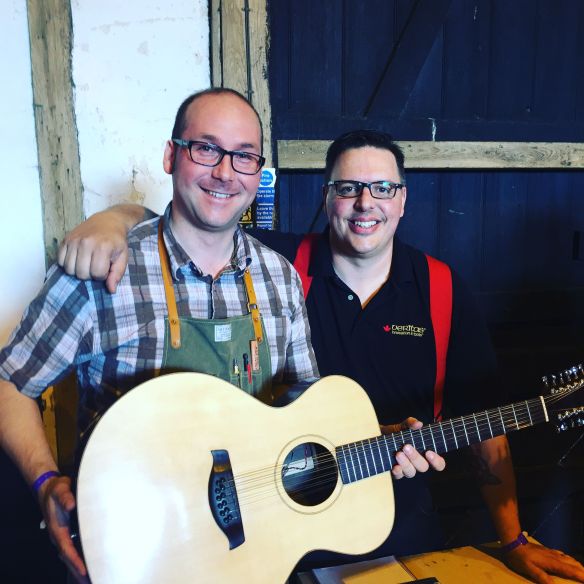
Finally meeting Vic (Minimalist Woodworker) in person was one of the highlights of EWS
Looking forward to 2016, there will be more articles in Furniture Cabinetmaking, in addition to which I hope to be able to announce a very special article for another publication in the coming months. In the workshop, my focus will be on finishing the parlour guitar, and also building the Mystery-Caster, both of which will be covered in detail on this blog. A number of teaching opportunities have presented themselves, and consequently there is also the possibility that I will be let loose on unsuspecting woodwork students – more details to follow once I have them. So plenty to keep me occupied, and 2016 is shaping up to be a very exciting year!
And to finish where we started, my top five pick of new releases from 2015 (in case anyone was wondering) in order, are:
- Banditos – Banditos
- Nashville Obsolete – Dave Rawlings Machine
- Edge of the Sun – Calexico
- Meta-Modern Sounds in Country Music – Sturgil Simpson
- No Cities To Love – Sleater-Kinney
Happy New Year, dear reader, catch you in 2016!




























